The old vet was decades out from war.
His mind remained as sharp today as it had been in 1944 when he arrived in Europe.
He rendered a reasoned opinion about the effectiveness of American small arms.
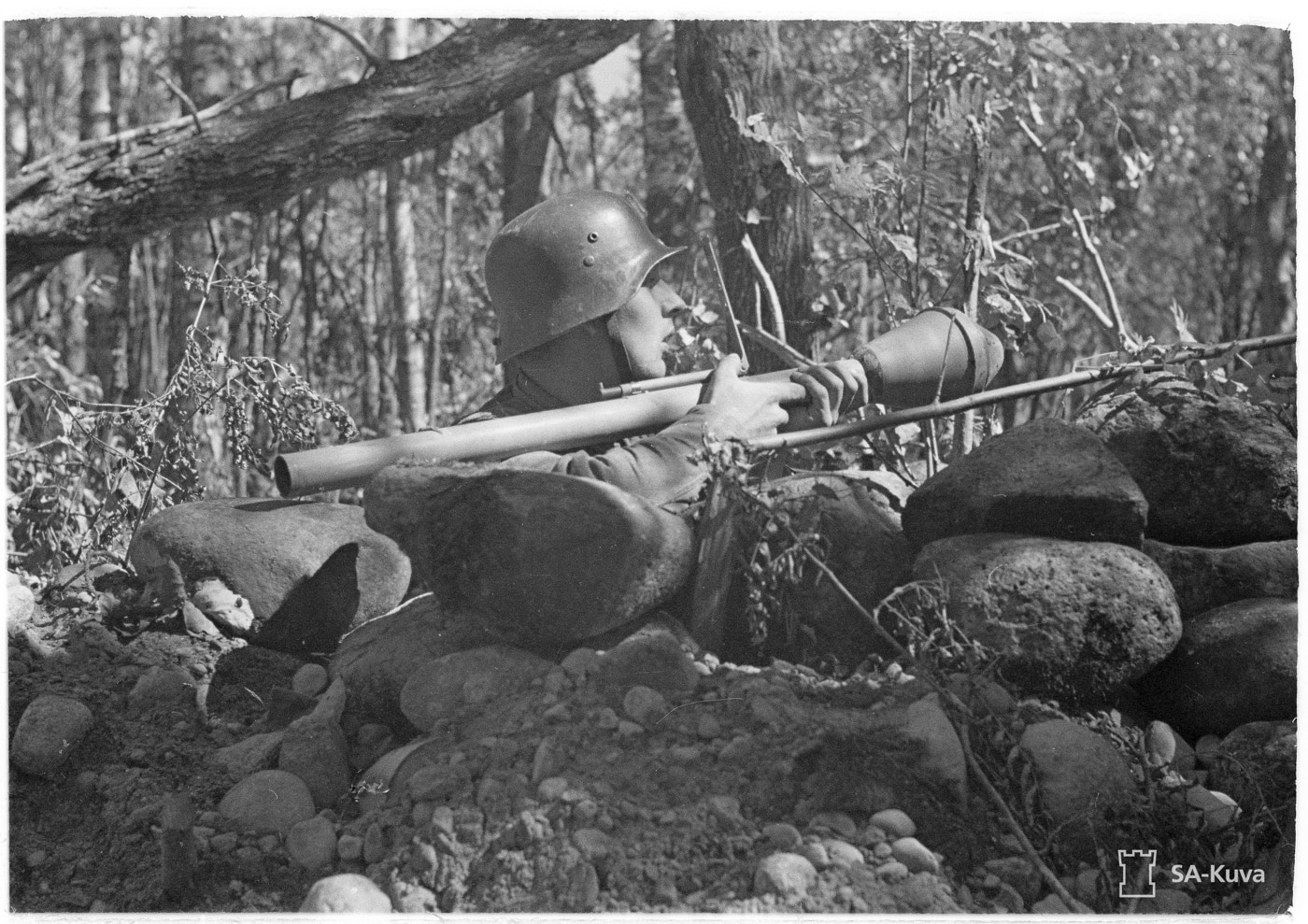
A Finnish soldier armed with a Panzerfaust is stalking a Soviet tank near Vuosalmi on July 26, 1944. Image: Finnish Defence Forces
He respected theM1 Carbinefor its modest weight and maneuverability and revered theM1 rifle.
They all revered the M1 rifle.
There really was only one M1.
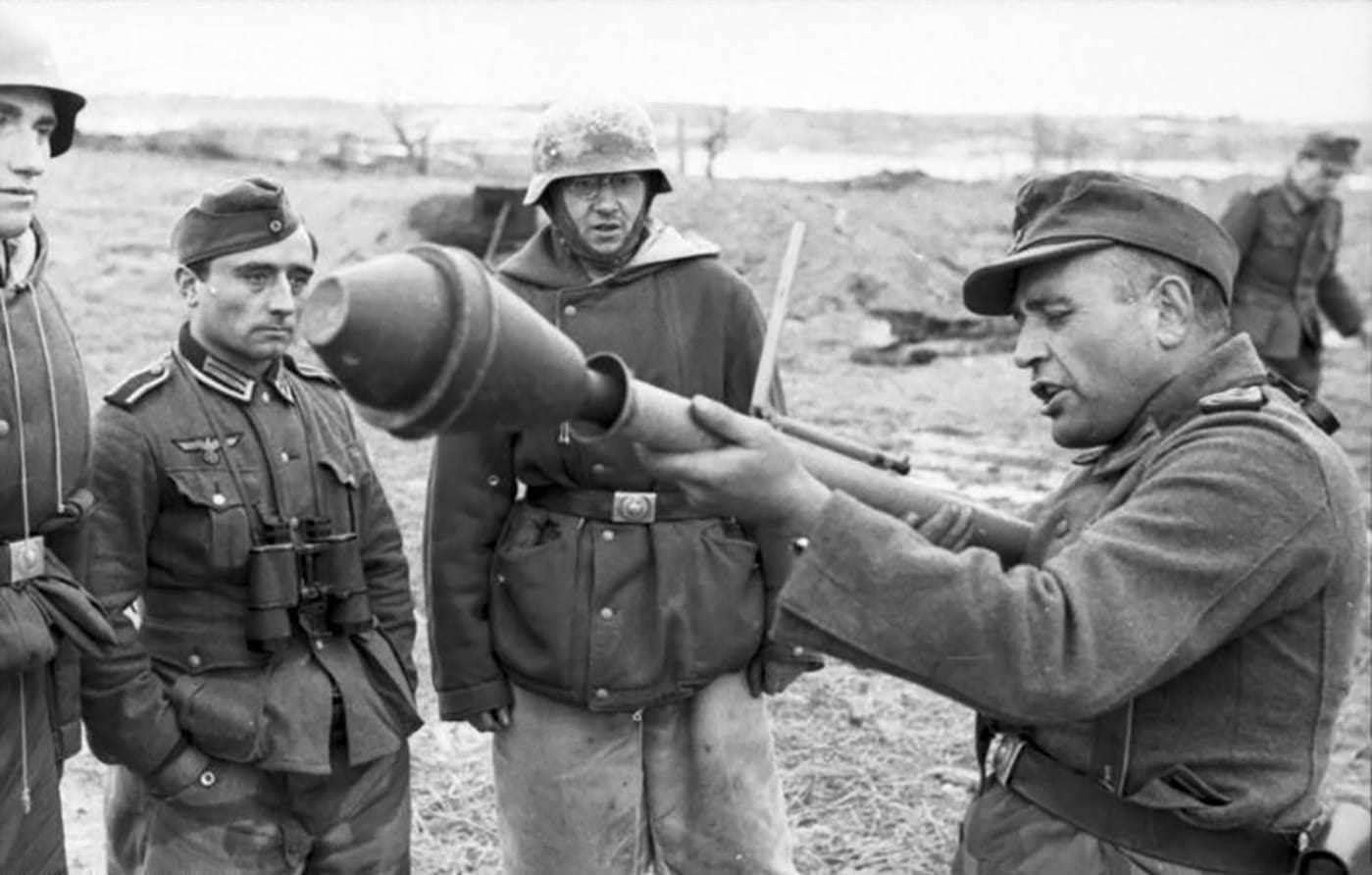
On the Eastern Front, a German sergeant teaches his soldiers how to use the Panzerfaust to attack Russian tanks. Note the tall sight and how the launcher is held in the armpit. Image: Polish National Digital Archives
We call it the Garand, but they generally didnt.
What was surprising, however, was his take on the enemy weapons he faced.
We are enamored with theStG44and MG42 for their groundbreaking design, and rightfully so.
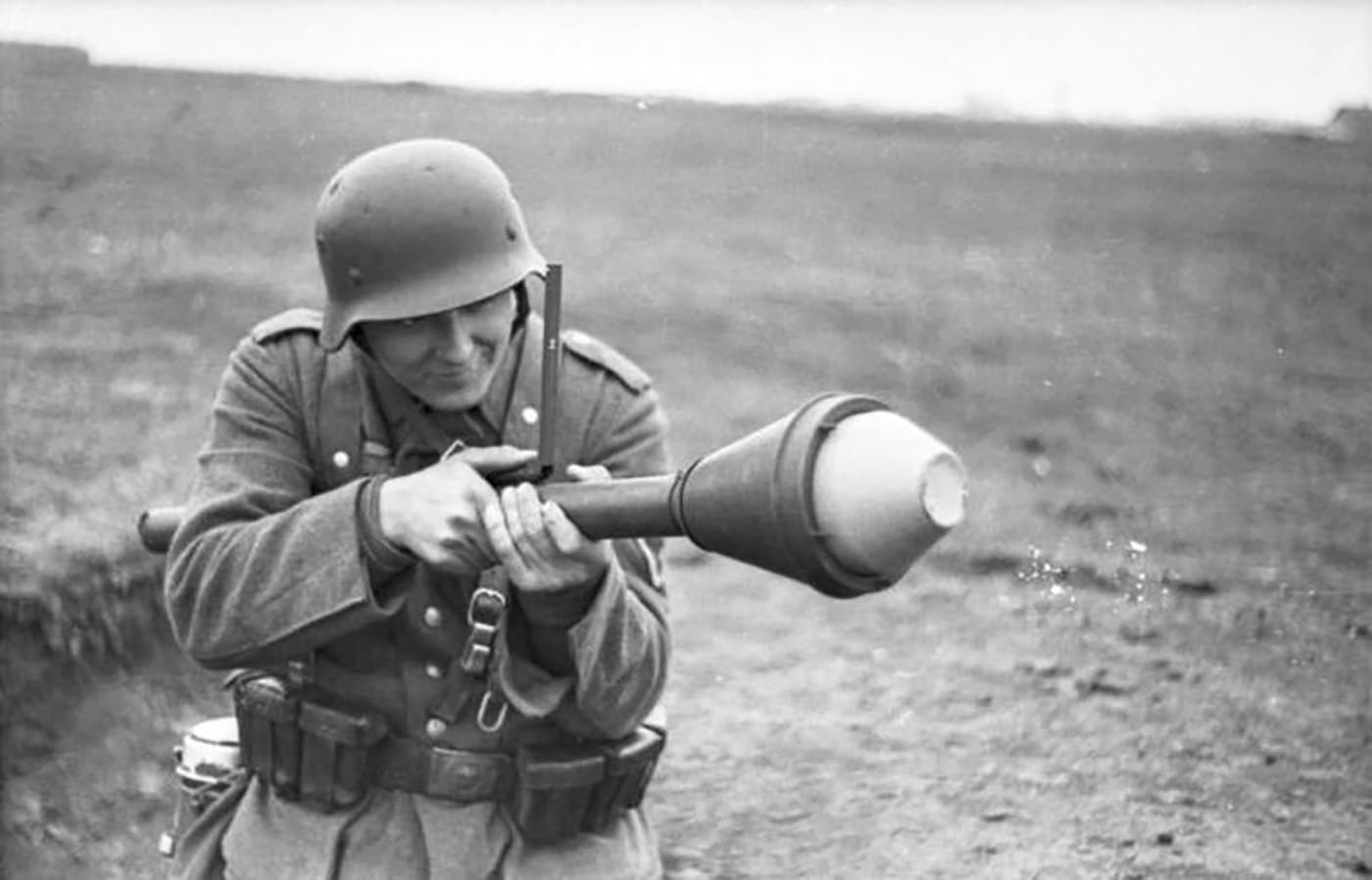
In southern Ukraine, this German soldier fires a Panzerfaust during a training exercise in the Spring of 1944. Image: Polish National Digital Archives
However, the one German weapon he held in highest esteem was the Panzerfaust.
Its tough to imagine how junky modern war is.
Industrial nations pour themselves into war production and simply blanket the battlefield with weapons, ammunition, and gear.
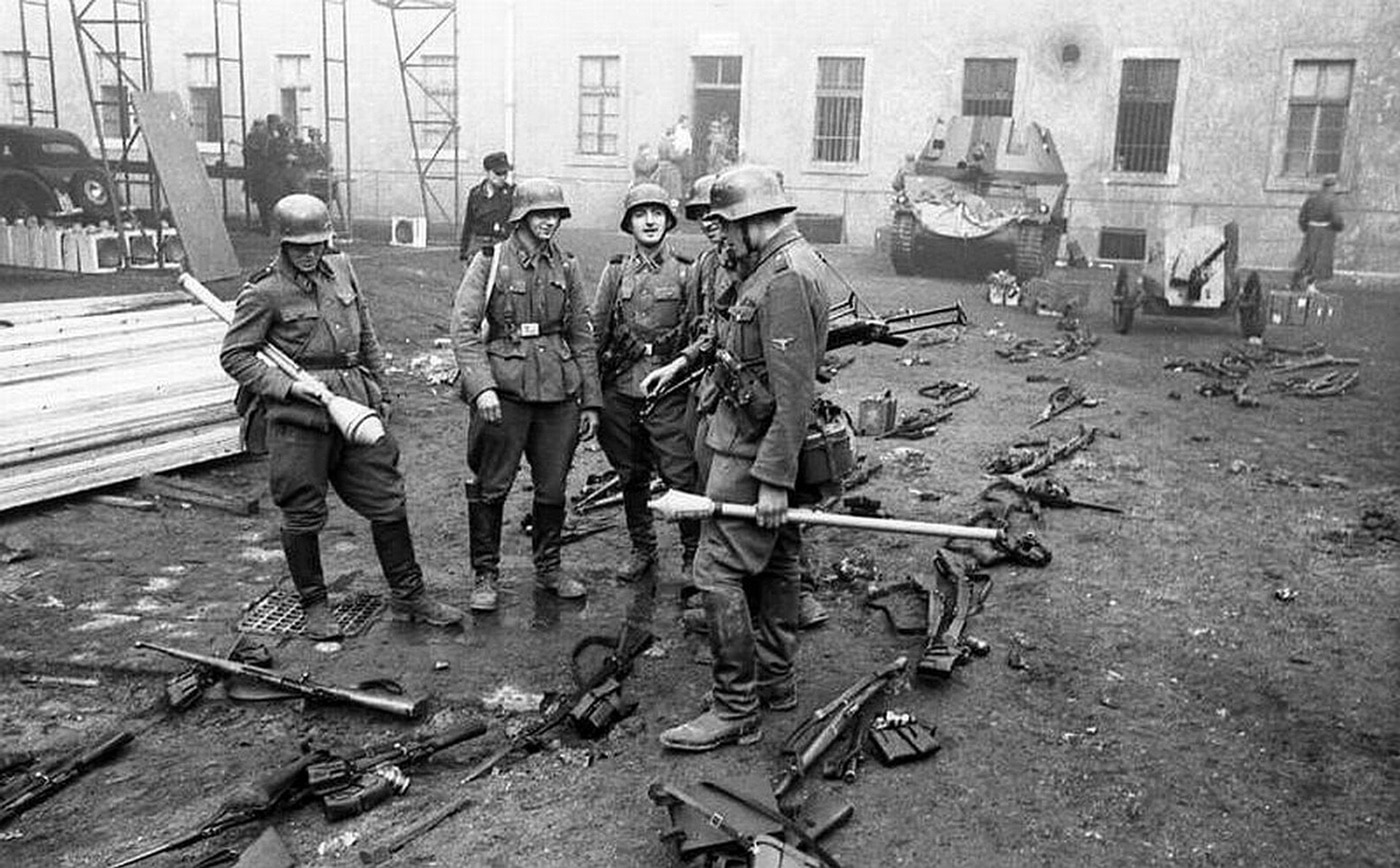
During Operation Panzerfaust, German Waffen-SS soldiers stand outside the Hungarian guard barracks in Buda Castle in Hungary. The man on the left holds a Panzerfaust. Image: Polish National Digital Archives
In this case this man said his unit captured German Panzerfaust antitank weapons by the unopened crate.
He made a point to keep a handful of these handy little monsters in his jeep at all times.
However, the Panzerfaust was just the ticket for making an unannounced entry into an occupied building.
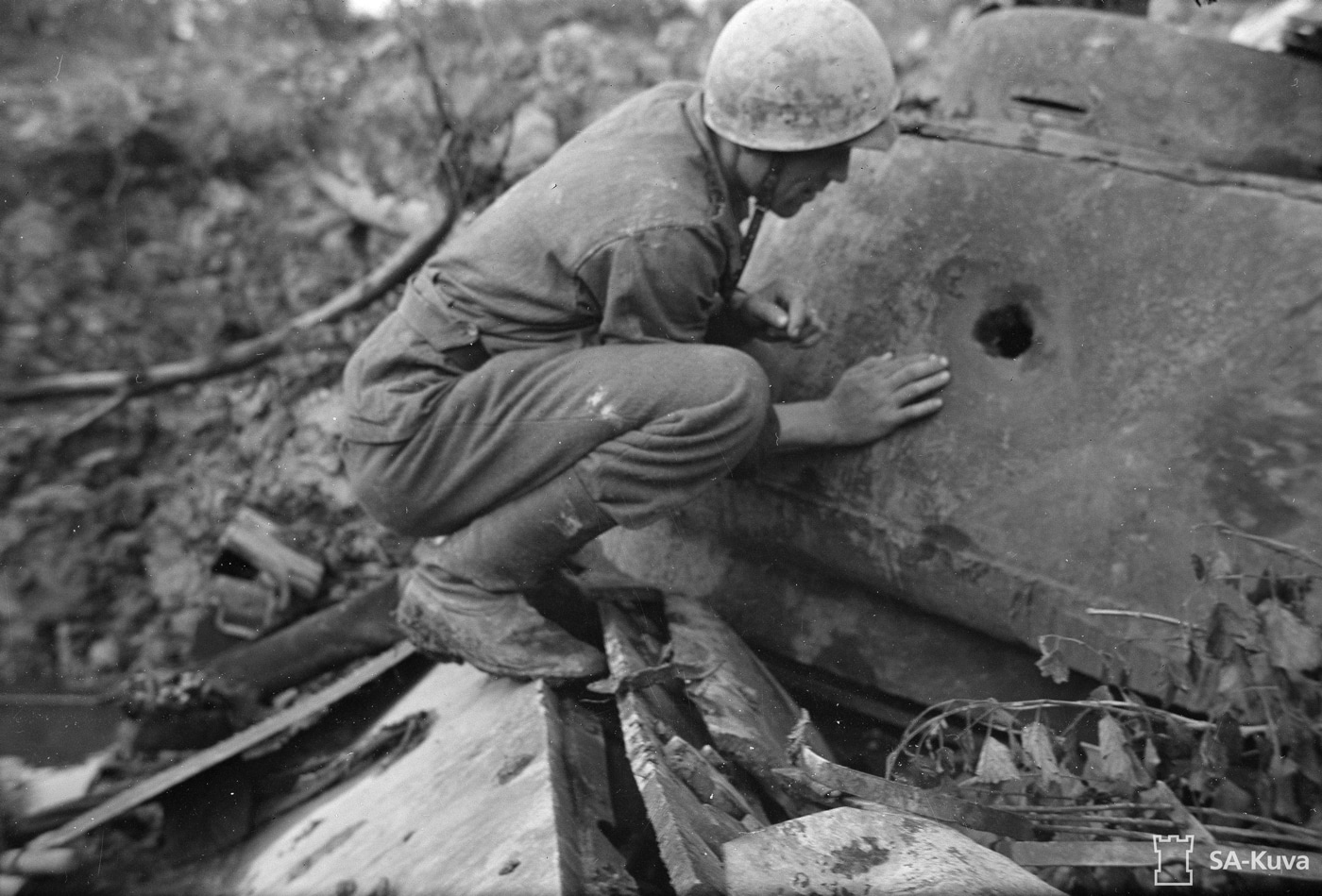
A Finnish soldier inspects a hole in a Soviet Union tank made by a Panzerfaust during the Continuation War, July 20, 1944. Image: Finnish Defence Forces
He said they burned through dozens of the things and loved them.
In Normandy, the Panzerfaust accounted for 6% of the Allied tanks knocked out in combat.
The technical appellation was faustpatrone or fist cartridge.
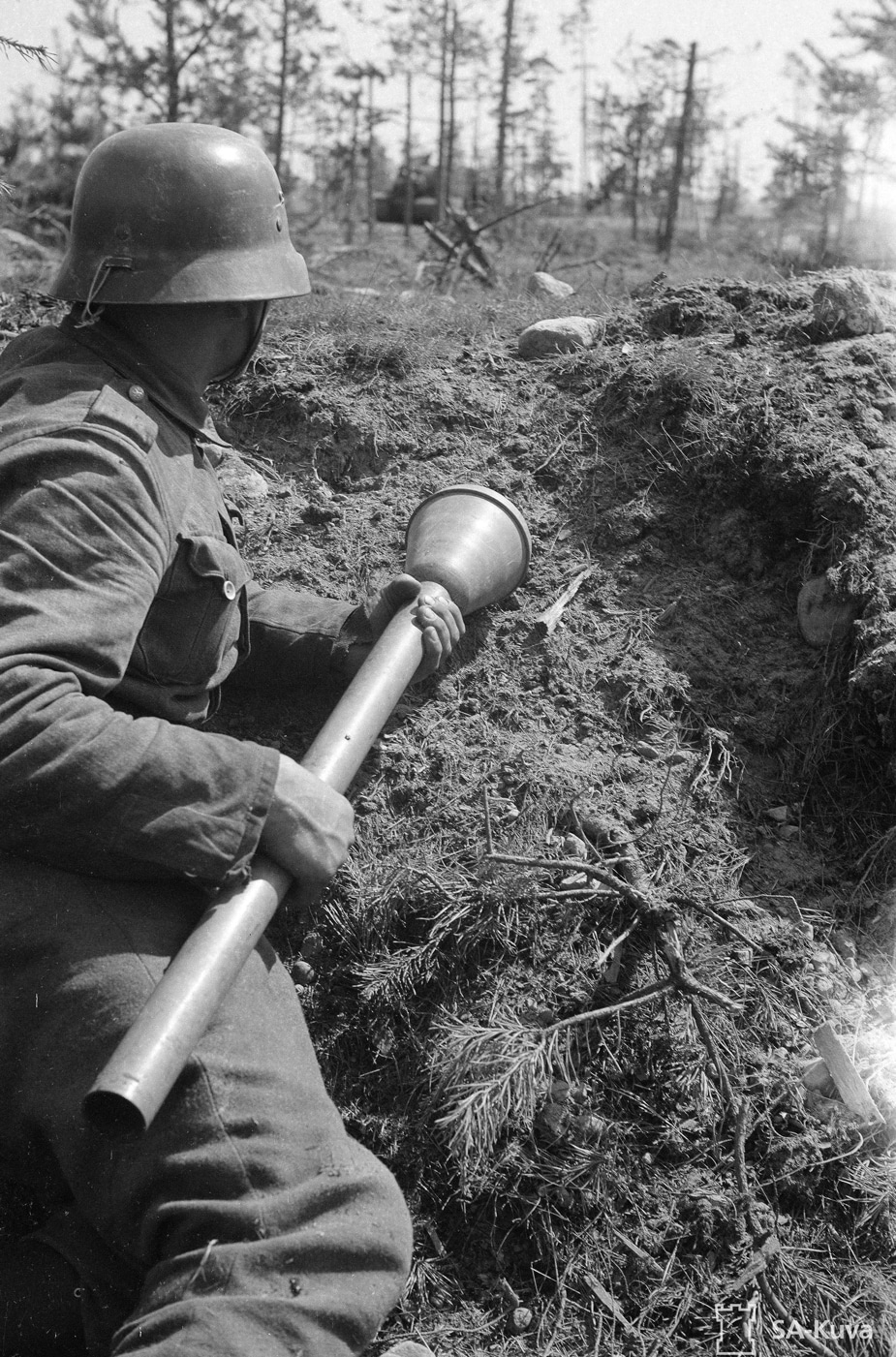
A Finnish soldier prepares to engage Soviet armor with a Panzerfaust during July 1944. Image: Finnish Defence Forces
The casual observer could be forgiven for presuming the Panzerfaust was a rocket launcher.
However, it was really more of a recoilless gun firing a projectile from a disposable tube.
The design was a study in simplicity.
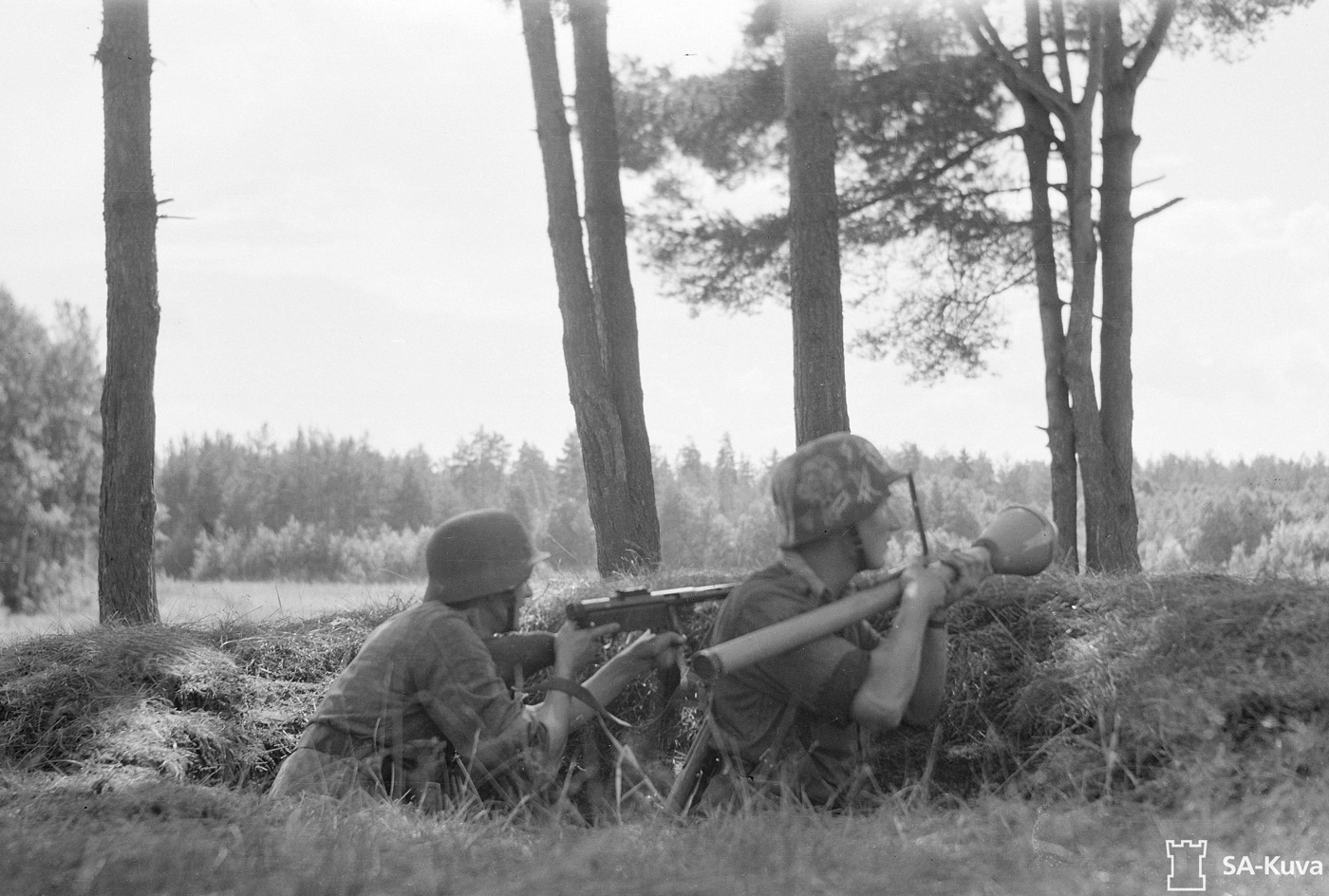
A Finnish Panzerfaust team moves into position to attack a Soviet tank on August 5, 1944. Image: Finnish Defence Forces
The warhead contained a shaped charge comprised of a 50/50 mix of TNT and trihexogen explosives.
Fitted to the warhead was a wooden dowel adorned with folding sheet steel fins that deployed when fired.
The round was shipped attached to a simple steel tube.
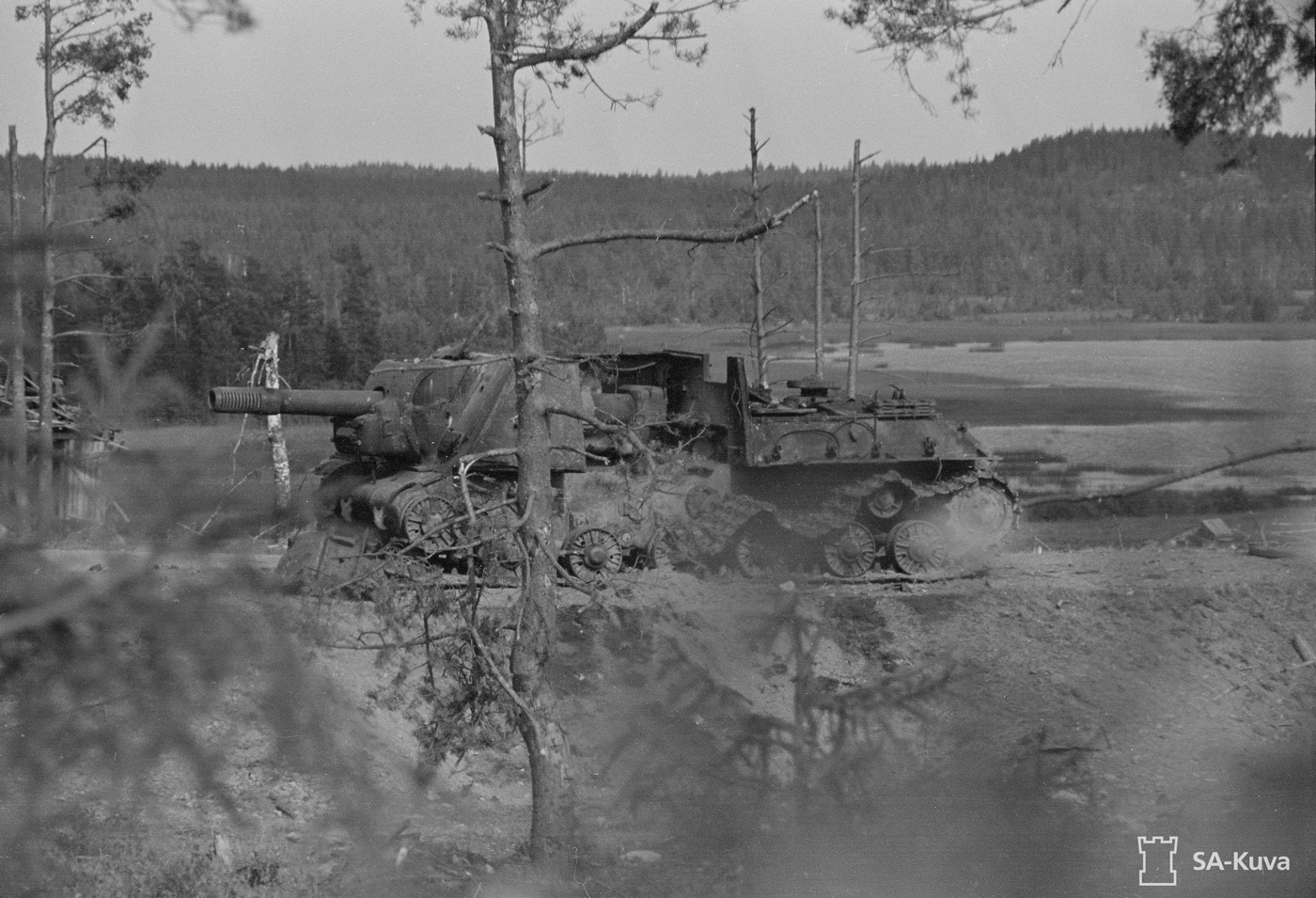
A Finnish tank hunting team claimed this kill of a ISU-152 with a Panzerfaust. Image: Finnish Defence Forces
Propellant was otherwise unremarkable blackpowder.
The Panzerfaust came in four different sizes.
Each variant was designated by its expected effective range.
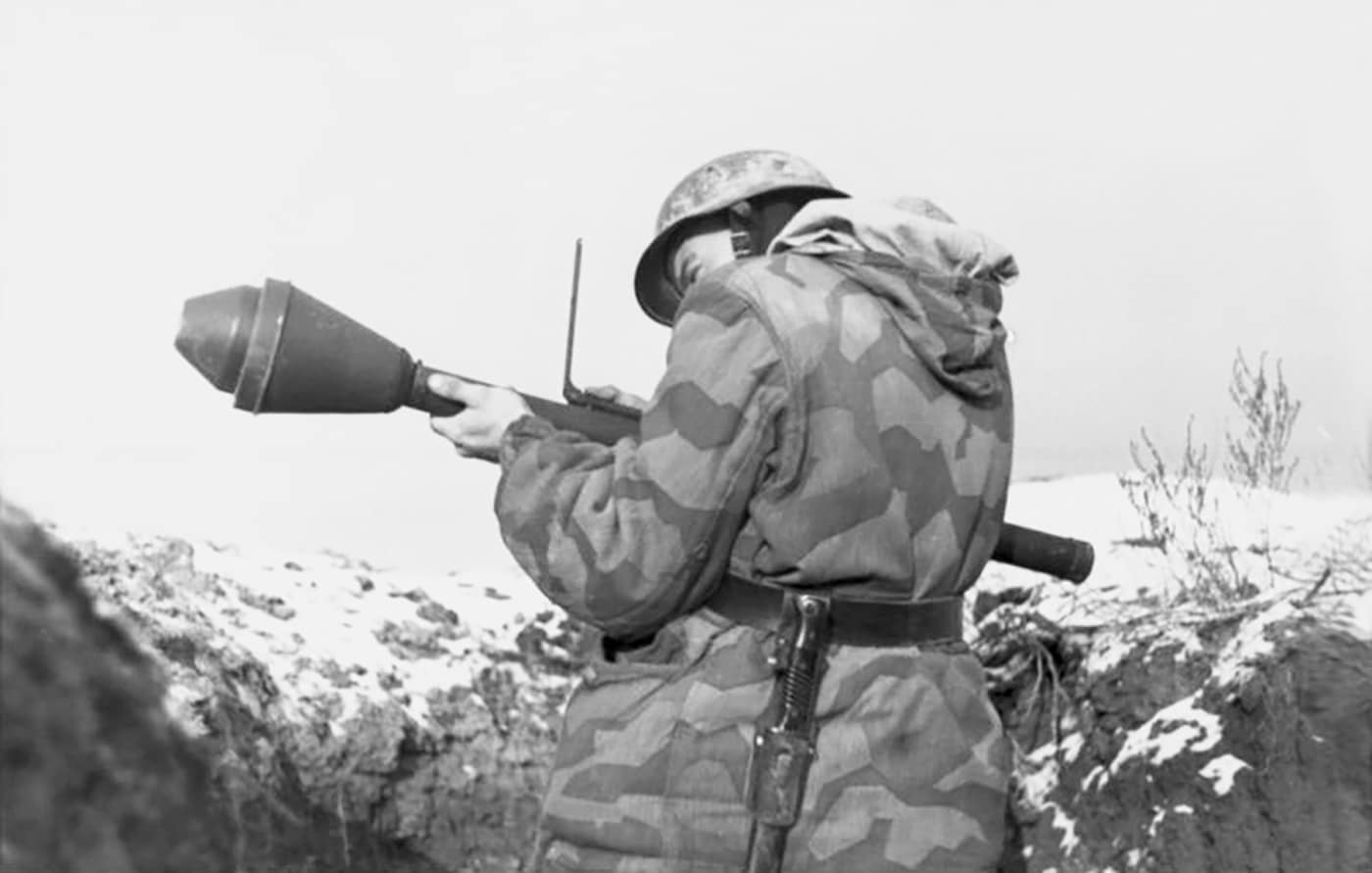
A German soldier prepares to fire a Panzerfaust on an advancing Russian tank in southern Ukraine during December 1943. Image: Polish National Digital Archives
The first model, the Panzerfaust 30, weighed 11.5 lbs.
and burned 3.5 oz.
The Panzerfaust 30 would burn through 200mm of steel armor, or just shy of 8.
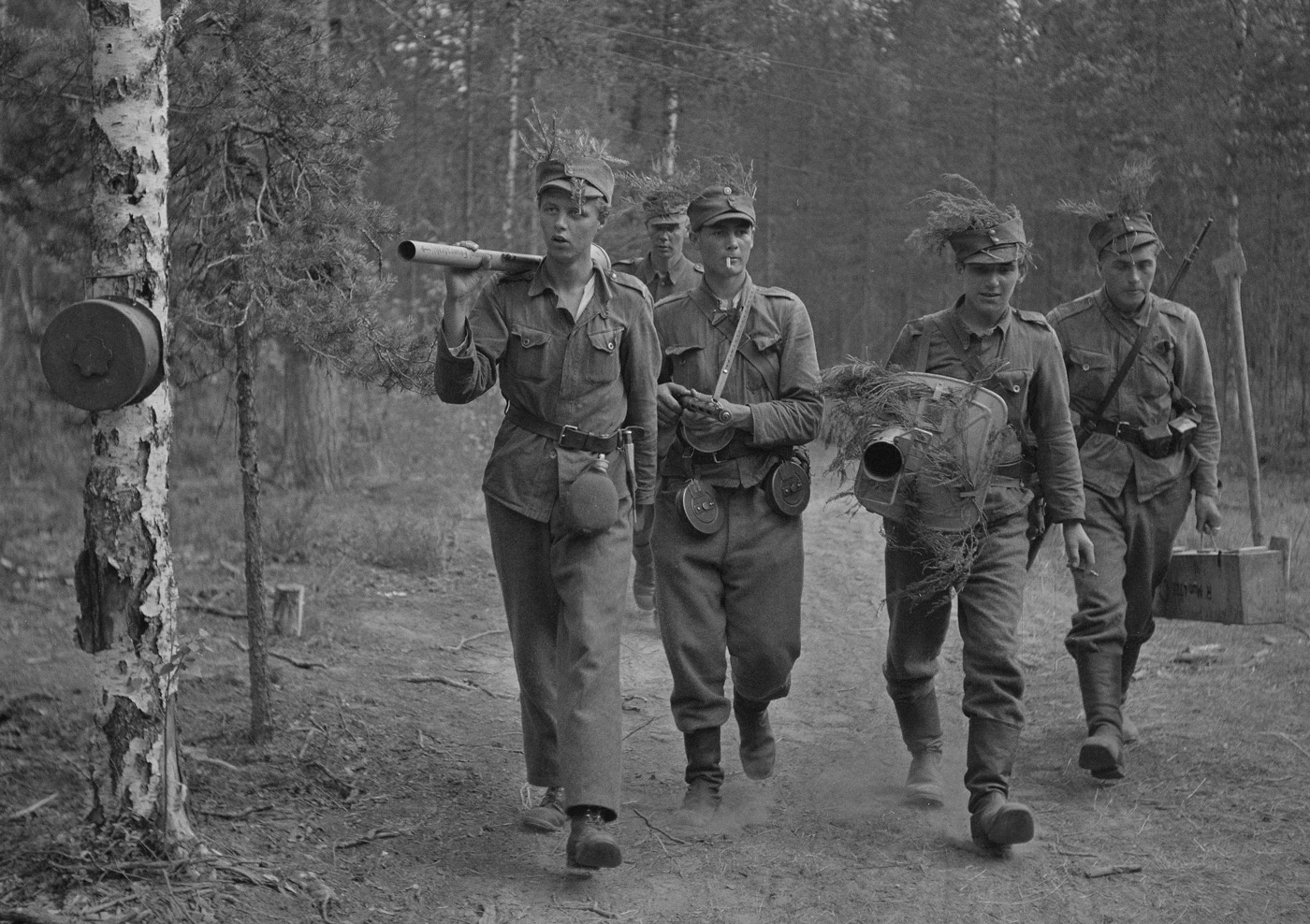
Finnish troops armed with both Panzerfaust and Panzershreck weapons return from hunting enemy tanks. Image: Finnish Defence Forces
The Panzerfaust 60 weighed 13 lbs., burned about 4.5 oz.
of black powder, and traveled at 45 meters per second.
The Panzerfaust 100 weighed 15 lbs., burned 7 oz.
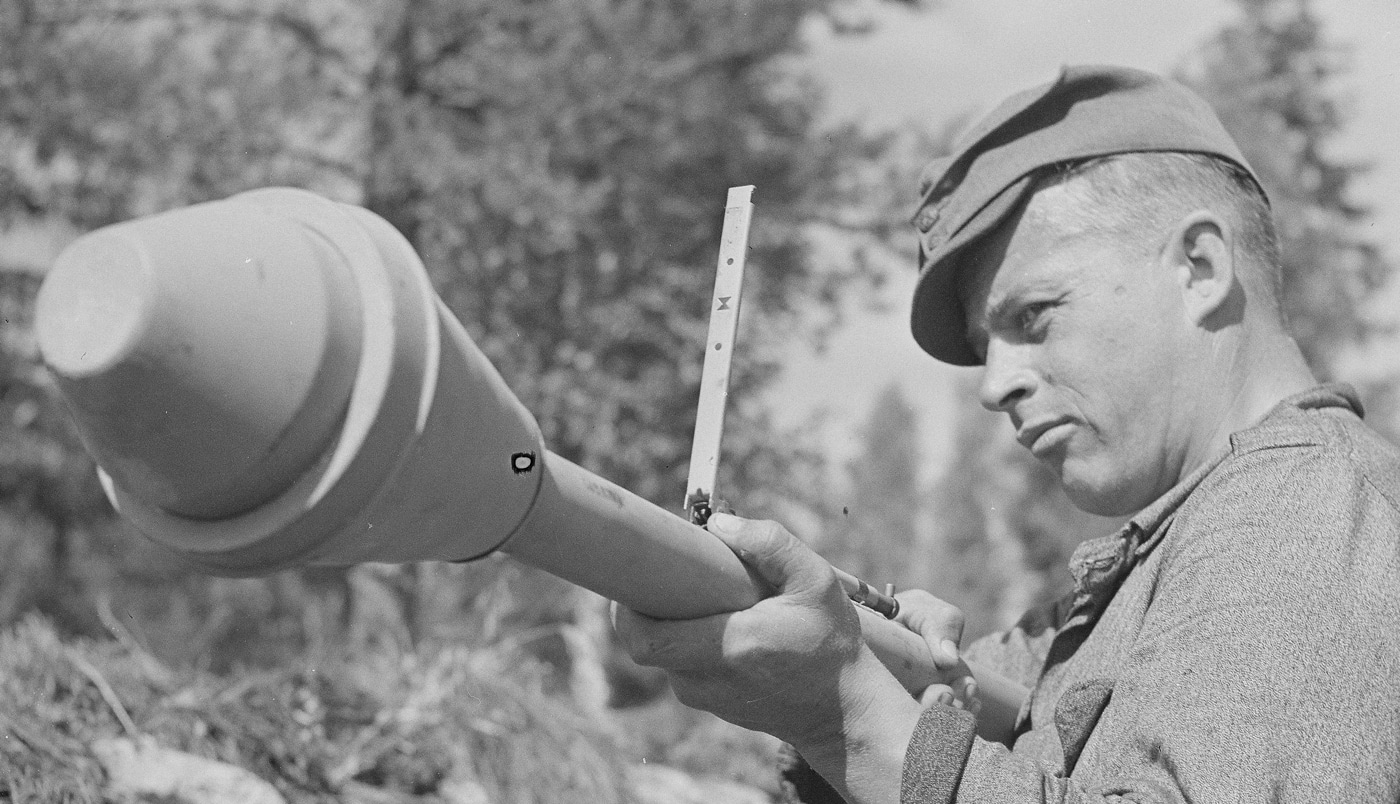
The Panzerfaust sight is clearly visible in this photo of a soldier practicing with the anti-tank weapon. Image: Finnish Defence Forces
of powder, and traveled at 60 meters per second.
Though 100,000 copies were produced, none were known to have been used in combat.
It is believed it could penetrate thicker armor in addition to other upgrades.
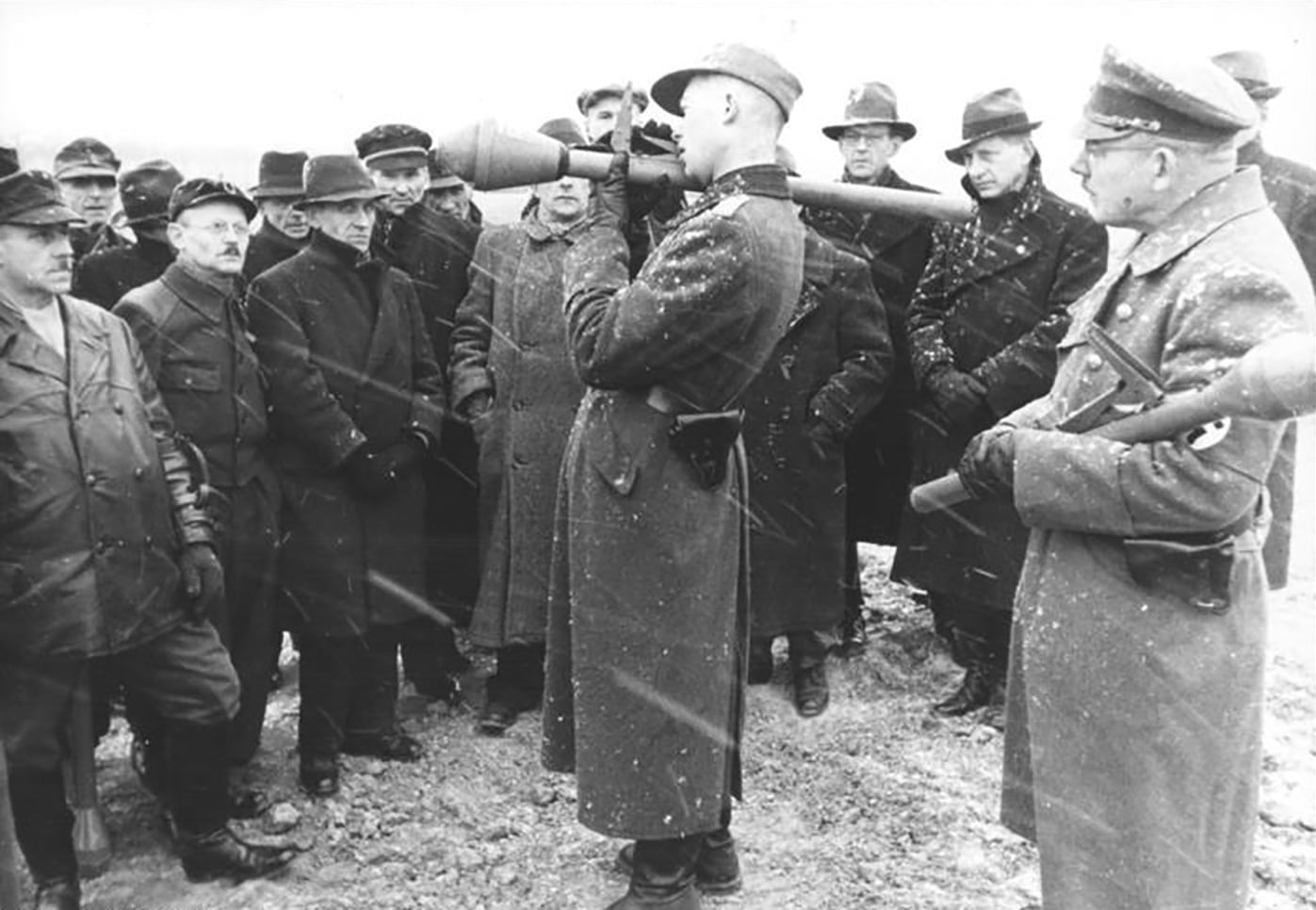
A German officer explains the use of the Panzerfaust to Volkssturm volunteers in early 1945. Image: Polish National Digital Archives
This weapon served as the inspiration for theCombloc RPG-2that was subsequently widely exported.
Firing the Panzerfaust
The Panzerfaust did not have a trigger in the classical sense.
In its place was a lever just behind the warhead that was squeezed to detonate the boost charge.
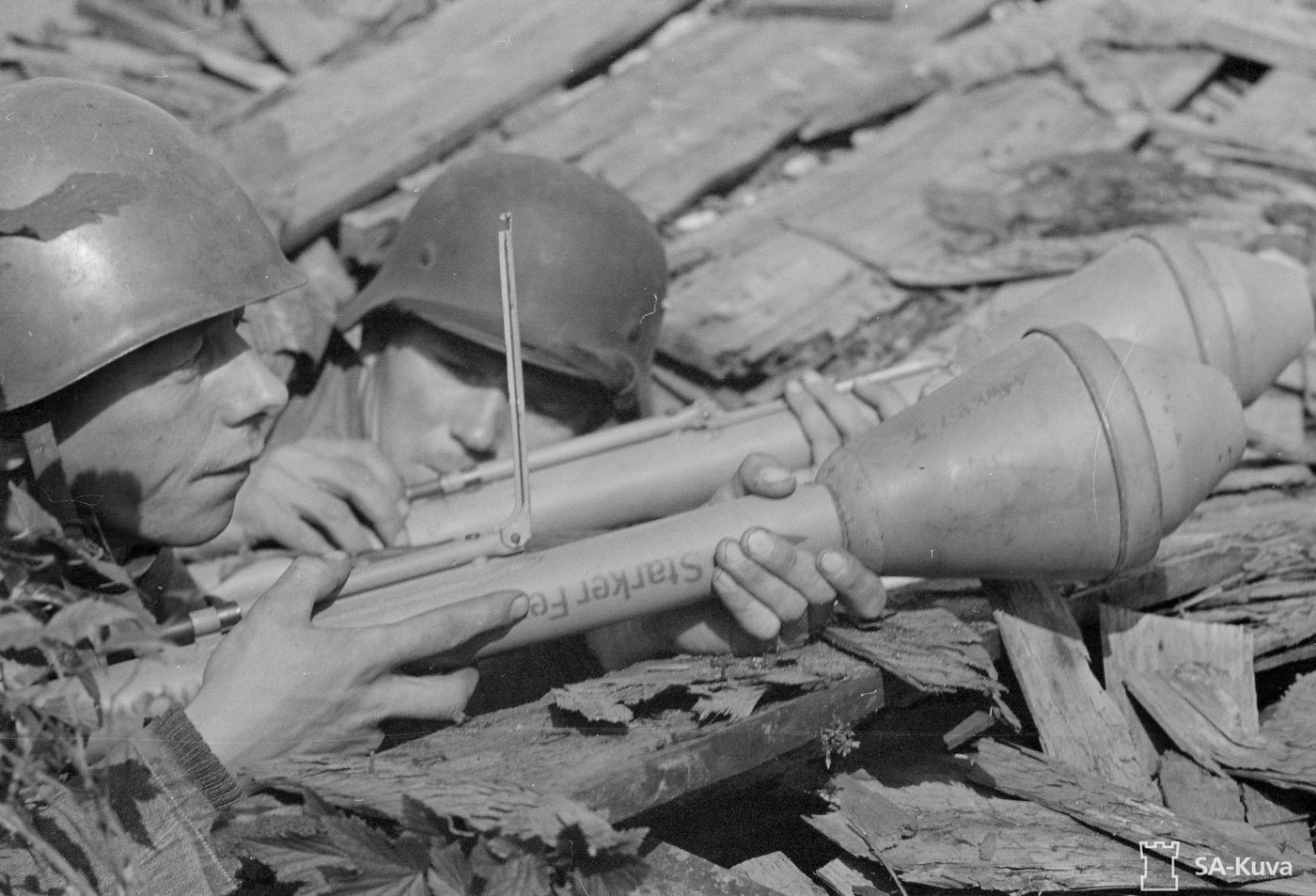
This Panzerfaust is labeled “Starker Feuerstrahl” which roughly translates to English as “a strong jet of fire.” Image: Finnish Defence Forces
Most launcher tubes had the words Achtung.
printed on the side which translated to Beware.
However, the warhead was undeniably effective when it did connect.
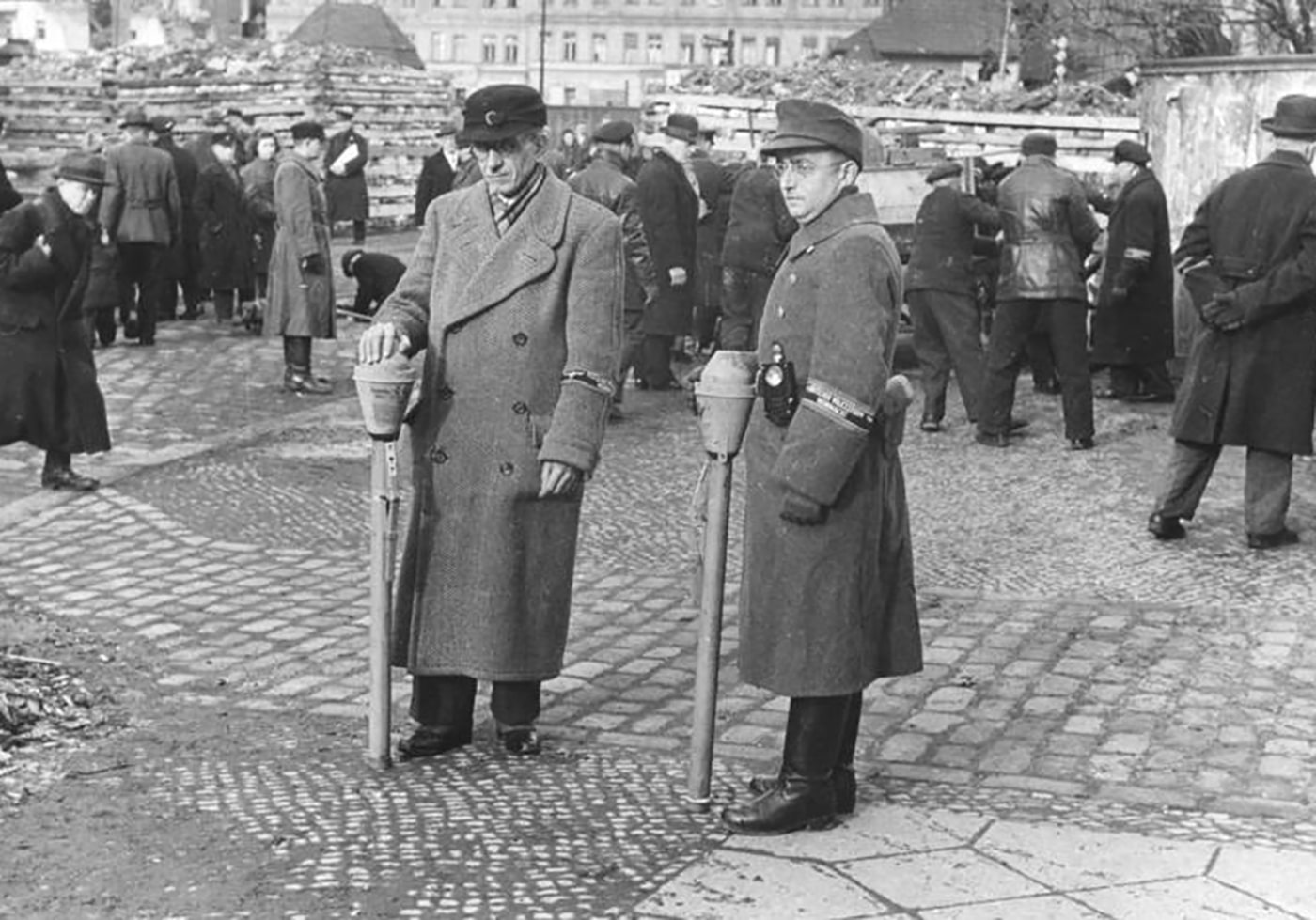
Members of the German Volkssturm stand with Panzerfausts near a defensive barrier on March 10, 1945 in Berlin. Image: Polish National Digital Archives
Subsequent spalling and incendiary effects were distressingly horrible.
I once met an old vet in the VA who had lost a Sherman to a Panzerfaust.
He had great respect for them.
Panzerfaust Legacy
The Panzerfaust was the classic desperation weapon.
In so doing, the Panzerfaust changed the face of modern war.




